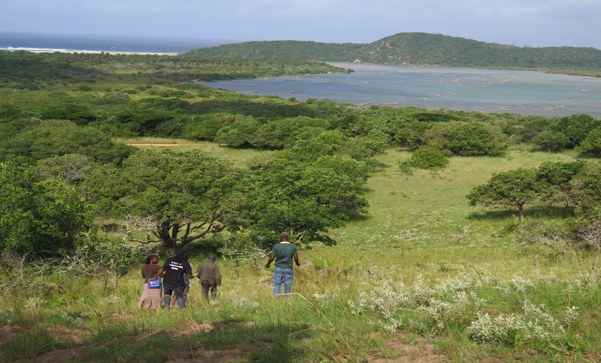
12 Jul CCRN at “People and the Sea”
CCRN Director Tony Charles organised a special session for MARE 2017 (July 5-7) which took place in Amsterdam, Netherlands. The session title was “Coastal Communities, Environmental Conservation and Sustainable Livelihoods”. During this session researchers presented on and discussed coastal communities that are engaging in conservation initiatives, often linked to the goal of sustaining local livelihoods. Researchers examined the ingredients of success in these conservation initiatives, and how these initiatives can be better supported by high-level policy. This session described a sampling of the network’s research, with presentations on examples from South Africa, India and Madagascar. The session also involved inviting members of the audience to share their community-level experiences with conservation-livelihood linkages, and described a new global crowd-sourcing initiative, Communities in Action, which gathers examples of community engagement in conservation and sustainable livelihoods.
CCRN members Philile Mbatha, Prateep Kumar Nayak, and Wayne Stanley Rice presented their research during this session, continue reading to view the abstracts from their presentations.
Plural Governance Systems and Shifting Coastal Livelihood Strategies in South Africa
Philile Mbatha
Department of Environmental and Geographical Sciences
University of Cape Town, South Africa
A number of rural coastal communities in South Africa have a long history of interacting with coastal environment and utilizing coastal resources for livelihoods. However, due to histories of land dispossession and marginalization in terms of coastal resource access and use over the years, the livelihoods of people in rural communities such as Kosi Bay have shifted as a result of various governance processes introduced in colonial, apartheid, as well as democratic eras in South Africa. Through the lens of the Kosi Bay community; this study 1) explores the livelihood strategies employed by rural coastal communities living in conservation areas, 2) describes the complex governance systems relevant to coastal resource use, 3) seeks to understand how people’s livelihood strategies and choices have been influenced by changing plural governance systems and processes, and 4) outlines the different norms, values, principles, images and discourses that inform the governance of coastal resources and resource use sectors in Kosi Bay from the international level, down to the local level. The paper highlights the critical role of governance in assessing people’s livelihood strategies and argues for greater attention to governance in livelihood analyses.
Occupational Mobility and its Implications for Human-Environment Connections and Livelihoods in Chilika Lagoon, India
Prateep Kumar Nayak
School of Environment, Enterprise and Development; Environmental Change and Governance Group
University of Waterloo, Ontario, Canada
The presentation focuses on key environmental, political, social and economic factors shaping occupational mobility in Chilika Lagoon, Bay of Bengal, India – including (1) fisher’s mobility within and outside the fishery sector as part of their overall livelihood adaptation strategy and (2) geographical spread of fishers’ occupational mobility that exposes them to a number of externally imposed challenges. Using impacts from sectoral and geographical mobility by fishers as a measure, the paper reviews the status of their linkages with existing fishery institutions and the Lagoon resources across various levels to assess the extent to which fishers have been disconnected from the ongoing institutional processes and the Lagoon environment. Conclusion point to emerging trends and future scenarios regarding occupational mobility in Chilika.
The Importance of Social Relations and Networks for Implementing and Governing Coastal-Marine Community-Based Conservation Initiatives: The Case of The Bay of Ranobe, South-West Madagascar
Wayne Stanley Rice
Department of Environmental and Geographical Sciences
University of Cape Town, South Africa
Natural resources are unde r threat in the absence of effective governance institutions at the appropriate scale. Commons research has long advocated, based on historical and contemporary evidence, the ability of local resource users to manage and allocate benefits from natural resources equitably over long periods of time with limited inefficiencies. Furthermore, concerns surrounding national and international conservation agendas’ promotion at the expense of local livelihood requirements has generated interest in community-based conservation initiatives, encouraging local community participation and knowledge in natural resource management. Nonetheless, many scholars agree early interest has largely diminished, due to various studies depicting a lack of success in meeting ecological and social goals. However, whilst the implementation of community-based conservation initiatives has yielded mixed results, this may be due in part to conventional scientific approaches not having adequately incorporated complex human dimensions. The failures to devolve decision-making powers to local communities, the difficulty of equitable community representation and distribution of benefits, and weak participation have perhaps equally contributed. Consequently, the importance of social relations and networks is increasingly noted to be influential for implementing and governing more socially just conservation initiatives. Research undertaken in the Bay of Ranobe, south-west Madagascar, appraised social relations and networks present/ absent, and the influence thereof on governing natural resources present. Village presidents and local fisher association community representatives were identified as central actors within the network. However, several concerns were expressed by community members regarding these actors due to limited knowledge diffusion and inequitable benefit distribution. Moreover, mixed community perceptions of coastal-marine community conserved areas were highlighted, citing a lack of community involvement leading to decreased levels of community buy-in. This research informs and enriches conservation planning and governance approaches, and contributes to the theory and practice of more community-inclusive conservation regionally and globally.






